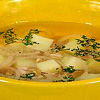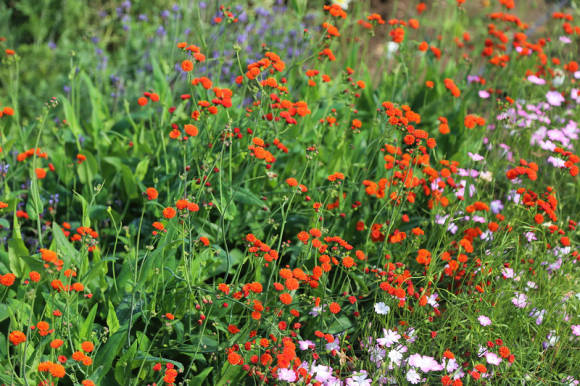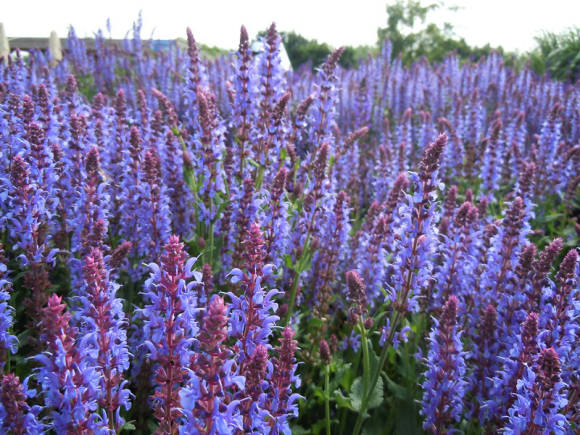 Summer is in full swing, it's July. Work is in full swing in the gardens and vegetable gardens, we serve our plants in the hope of getting a beautiful and long flowering, bright decorative foliage, a tasty and rich harvest. Carrying out standard care operations, in particular, feeding the plants, we often see a completely different result than we expect - a green pet should be happy and grow well, having received additional nutrition, and he suddenly starts to wither. What's the matter? Are we always doing the right thing?
Summer is in full swing, it's July. Work is in full swing in the gardens and vegetable gardens, we serve our plants in the hope of getting a beautiful and long flowering, bright decorative foliage, a tasty and rich harvest. Carrying out standard care operations, in particular, feeding the plants, we often see a completely different result than we expect - a green pet should be happy and grow well, having received additional nutrition, and he suddenly starts to wither. What's the matter? Are we always doing the right thing?
We feed our plants with two types of fertilizers - organic and mineral. I will not now discuss the benefits of organic matter and the dangers of so-called "chemistry", I will only say one thing - plants are able to consume nutrients only in mineral form! That is, any organic object - fallen leaves, manure, grass cuttings or a mole that has died in the garden bed - will become available to the plant as a useful top dressing only after mineralization, that is, decay into available nutrients - nitrogen, phosphorus, iron, zinc and many other components. So the plant doesn't care whether it got nitrogen from manure or from ammonium nitrate. Another thing is when, in what quantity and for how long this nutrient enters the plant "food".
It is very important to understand that at different stages of life, plants consume nutrients in different quantities.
So, in the phase of active growth, that is, from the moment the seed germinates to the moment the first flowers form, the plants absorb the most nitrogen, since it is a building material in the formation of plant tissue.
During the formation of generative organs - flower buds, peduncles, buds, flowers - most of all the plant needs phosphorus.
Vthe period of preparation of plants for winter - plays the "first violin" in the symphony of elements potassium.
Of course, the processes of plant growth and development are not divided into clear periods of consumption of only one nutrient, all elements are absolutely necessary and irreplaceable throughout the life of a plant, and their number is not limited only to nitrogen, phosphorus and potassium.
All batteries are conventionally divided into Macronutrients and Microelements.
Macronutrients include nitrogen N, phosphorus P, potassium K, calcium Ca, magnesium Mg, iron Fe... They are called macronutrients because their role in the life of a plant is very great and their consumption by plants is greater than the consumption of other elements.
All elements that were not included in the first group were attributed to the group of trace elements on this basis. This is boron B, molybdenum Mo, manganese Mn, copper Cu, zinc Zn other.
Fertilizers can be applied to the soil in the fall - this is the main soil dressing, in the spring - pre-sowing / pre-planting application, as well as in the form of root and foliar dressing during the growing season of plants.
Plants can respond positively to fertilization, or they can get even more sick and even die. Why is this happening? It is unambiguously very difficult to answer this question, because a plant is a complex living organism, and not only fertilizers have an effect on it. All methods of plant care are inextricably linked with each other,  affect each other, depend on the type of plant, on its economic purpose, on weather conditions and on you and me.
affect each other, depend on the type of plant, on its economic purpose, on weather conditions and on you and me.
Fertilizer may not have the expected effect or have a negative effect if:
- fertilizer was applied out of time;
- fertilizer applied on dry soil;
- the visual diagnostics of plants was carried out incorrectly and the wrong fertilizer was applied to correct the nutritional deficiency;
- the fertilizer was applied in a form inaccessible to plants;
- an overdose of fertilizers was allowed;
- the reasons for the poor health of plants are not associated with a lack or excess of fertilizers.
In order not to get into a mess, adhere to the following recommendations:
- Take a rational approach to the choice of fertilizers, do not rush to extremes - use only organic matter or only mineral mixtures. With this approach, you can never get from the plants the maximum decorative effect or yield that they are capable of. Use fertilizers in combination.
- Observe the measure in the use of both organic and mineral fertilizers. It is not necessary to annually bring 5 carts of manure or 5 kg of azophoska to the site. Remember that manure is valid for 3 years after a single application, and not all plants can be applied with it. Correct the effect of manure by adding compost, herbal infusions and mineral fertilizers. And it is impossible to fully feed the plants with Azophos alone!
- Try to use complex mineral fertilizers, that is, those that contain both macro- and microelements. These fertilizers can be in liquid form - "Gumistar", "Giant", "Darina" and others, as well as in the form of granules, crystals or powder - fertilizers of the brand "Kemira", "Agricola", "Orton" and many others.
- Submit soil samples for a comprehensive analysis (humus, nutrient content, acidity) in the laboratory at least once every 3 years. This will help you to competently approach not only the use of fertilizers, but also the choice of plants to grow, understand what they need and what result you can expect.
- In order to remove the deficiency of any nutrient, it is important not to make a mistake in the diagnosis and give exactly the element that the plant needs at the moment. Here you can not do without simple fertilizers, that is, those that contain only one nutritional element - ammonium nitrate, boric acid and others, as well as mixtures of microelements - "Cytovit", "Mikrovit" and others.
- It is not recommended to use the same fertilizer throughout the season (from spring to autumn). Pay particular attention to the percentage of nitrogen. If it is more than 5% in the fertilizer, the fertilizer can be used from spring to July 15th. After July 15, when plants begin preparing for winter, excess nitrogen is undesirable and even harmful, so choose fertilizers without nitrogen or those in which it is no more than 5% (for example, "Kemira-autumn"). This recommendation is true for all perennial fruit and ornamental crops. Vegetables are usually grown in one season, so they are fed in a different way, without too much nitrogen restriction.
- If you use simple fertilizers (containing 1-2 nutrients), as well as complex fertilizers such as nitrophoska (but containing only 3 elements - nitrogen, phosphorus, potassium), mix them with fertilizers of a different mineral composition for proper plant nutrition. Be sure to learn the rules for mixing fertilizers. So, for example, you cannot mix urea with ammonium nitrate, and nitrophosphate with potassium chloride. Do not store the resulting mixture for a long time, otherwise it may not only lose a lot of nutrients, but also acquire undesirable properties.
- Apply fertilizer fractionally, several times per season. For each crop, there is a well-defined amount of fertilizer and the number of fertilizing carried out. The fertilizer should be balanced in terms of the content of the elements.
When using fertilizers "by eye", we do not achieve the required decorative effect and yield, moreover, we harm plants, the environment, our health and pocket, because fertilizers are not cheap now.
- In sunny, warm weather, fertilizers are absorbed by plants faster, therefore, fertilizing should be carried out once a week. If the weather is cloudy, cold, the assimilation of fertilizers is slower, feeding should be carried out 1 time in 10-14 days. If you follow this principle and observe the dosage, there will be no danger of nitrate accumulation.

All these simple wisdom will help you make it easier to work with plants, get real pleasure and the expected effect of your investment.
Health to you and your "green" pets, and rich harvests for you!









